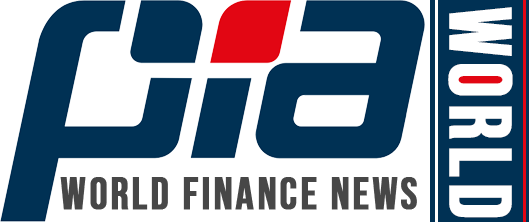Table of Contents
Month after month, and week after week, articles proceed to concentrate on mortgage charges within the Eighties, to seemingly paint an image that charges are nonetheless traditionally low.
And it’s just about all the time the identical narrative – be blissful along with your 6%, 7%, and possibly 8% mortgage charge as we speak as a result of there was a time when it was quite a bit worse.
It runs parallel to the tales of getting to stroll to highschool uphill each methods, within the snow, with out sneakers or a jacket.
Suck it up, cease complaining. At this time’s mortgage charges aren’t that prime! That’s the message.
It additionally doubles as a gross sales pitch to remind you {that a} 7% mortgage charge isn’t unhealthy, and could possibly be a lot increased, so don’t look a present horse within the mouth.
Why Do Eighties Mortgage Charges Matter At this time?
There’s an article from CNN that talks about mortgage charges within the Eighties, full with the “Suppose mortgage charges are excessive now?” headline.
It goes on to speak about how child boomers handled rates of interest as excessive as 19% in late 1981 once they peaked.
The 30-year mounted averaged round 9% in early 1978, earlier than climbing to 10% later that yr, 13% in 1979, and close to 15% in 1980.
Mortgage charges then hit an all-time excessive in October 1981, averaging a staggering 18.45%, per Freddie Mac information.
However guess what? Earlier generations not solely handled them, however had been delighted to shut with a charge at 19%. I assume it’s all relative, and 19% sounds quite a bit higher than 20%, proper?
A realtor quoted within the story provides that “our youngsters are shocked by 6%,” one other a type of basic toughen up jabs on the youthful technology.
Right here’s the issue although. It’s not an apple-to-apples state of affairs, similar to the boomers didn’t stroll to highschool uphill, each methods.
It’s most likely simple to assume again to these occasions and bear in mind it being quite a bit more durable, however does the maths agree? Or is it only a fuzzy reminiscence?
Down Funds Have been Greater and Residence Costs Have been Decrease within the Eighties
Again within the early Eighties, dwelling costs had been quite a bit decrease than as we speak, even as soon as inflation-adjusted.
Whereas numbers fluctuate by supply, let’s say the everyday dwelling again in 1981 was going for round $65,000. In as we speak’s {dollars}, that’s about $212,000.
In the meantime, the median down cost was round $20,000 in 1981, regardless of dwelling costs being so low cost comparatively.
We’re speaking a 30% down cost, give or take. On the identical time, 1 / 4 of dwelling consumers surveyed again then stated they may afford a down cost of $40,000 or extra.
Lengthy story brief, there have been smaller mortgage quantities and decrease loan-to-value ratios (LTVs) within the Eighties.
At this time, the median down cost is $27,500, per ATTOM Information Options for properties bought with financing through the third quarter of 2021.
That represented simply an eight % down cost primarily based on the nationwide median gross sales value.
With out getting too convoluted right here, as we speak’s dwelling purchaser carries a a lot bigger mortgage steadiness, and thus a better mortgage charge has much more influence.
In case your mortgage quantity is $45,000, an 18.5% mortgage charge isn’t so unhealthy. It’s about $697 monthly.
Now let’s think about as we speak’s dwelling promoting for $400,000. You place down 10% and get a charge of seven%, leading to a month-to-month principal and curiosity cost of about $2,395.
We’ll ignore the personal mortgage insurance coverage required for LTVs above 80%. It might take about 40% of as we speak’s revenue (DTI ratio) to pay that mortgage every month (principal and curiosity solely).
The $45,000 mortgage set at 18.5% in 1981 would solely require about 37% of median revenue for that point interval.
Utilizing an inflation calculator from the U.S. Bureau of Labor Statistics, $697 in October 1981 can be about $2,215 as we speak.
So regardless of that sky-high 18.5% mortgage charge, as we speak’s dwelling purchaser is in a harder spot with a 7% charge, with out even factoring in obligatory PMI.
You Can’t Take a look at Mortgage Charges in a Vacuum
| 1981 Mortgage | 2022 Mortgage | |
| Buy value | $65,000 | $400,000 |
| Down cost | $20,000 (31%) | $40,000 (10%) |
| Mortgage quantity | $45,000 | $360,000 |
| Mortgage charge | 18.5% | 7% |
| Month-to-month cost | $697 | $2,395 |
| Family revenue | $22,390 | $72,000 |
| Inflation-adjusted cost | $2,215 | |
| Mortgage-to-income ratio | 37% | 40% |
Merely put, you’ll be able to’t simply have a look at two mortgage charges from totally different a long time and conclude one is healthier or worse than the opposite.
Certain, a near-19% mortgage charge sounds extremely unhealthy, and positively is way increased than as we speak’s going charge of round 7%.
However one should additionally think about dwelling costs, family revenue, and inflation. With out these particulars, it really is an unverifiable strolling uphill each methods sort of story.
It’s additionally value contemplating the astounding share rise in mortgage charges currently.
Again in 1981, they solely principally doubled from early 1978 till their peak in late 1981.
From simply the beginning of 2022, the 30-year mounted has gone from round 3% to 7% as we speak, a 133% enhance.
And that’s by about 10 months, a lot shorter than the practically 4 years it took for charges to double within the late Nineteen Seventies and early Eighties.
So let’s cease speaking about mortgage charges within the Eighties.



